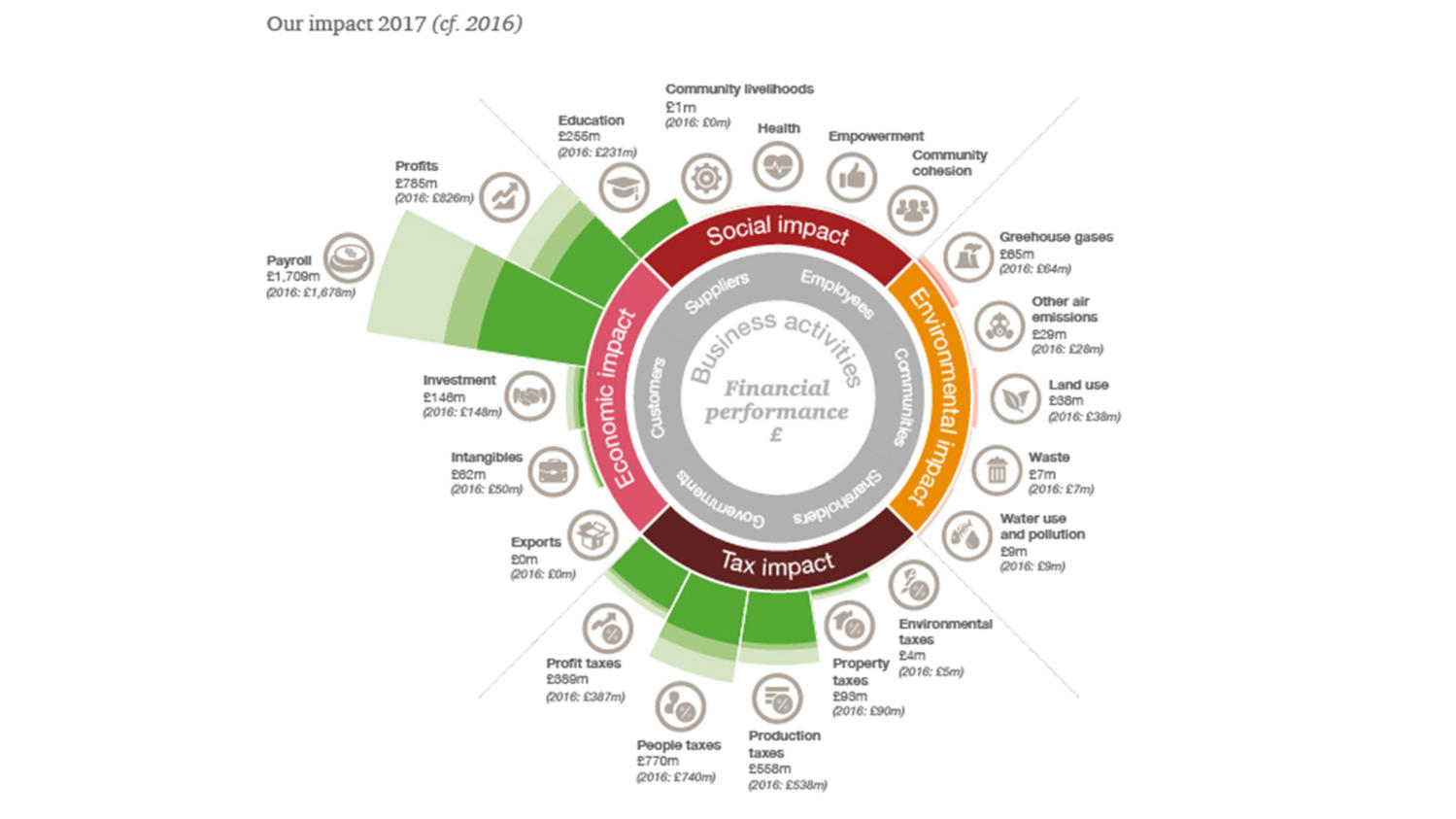PwC: Total impact analysis

PwC uses its Total Impact Measurement & Management (TIMM) framework to help organizations value positive and negative contributions to the environment, the economy and society created through their direct operations, their supply chains and wider impacts. For the last five years, we have also used TIMM to estimate the net contribution our business makes to society.
TIMM compares economic, tax, social and environmental impacts in monetary terms to provide greater transparency, and to inform and improve business decision making.
Valuing diverse impacts in consistent monetary terms makes it possible to do direct comparisons, and helps us manage trade-offs. The framework examines impacts along the entire value chain, from cradle to grave.
Our total impact analysis is helping to promote integrated thinking in our business. It’s given us a concept and language for considering social, environmental and tax implications alongside the financial business case. And, it has helped us to focus our activities to decouple business growth from our environmental footprints.
- No, but aligns with the Protocol’s framework
- Biodiversity & Ecosystem Services
- Climate & Air Emissions
- Land
- Waste Management
- Water
- Corporate
- Monetary
- Value to society
- United Kingdom
- Direct operations
- Upstream
- Services
Key findings
The TIMM analysis shows that, at -£146m, our environmental impacts are 3% of our positive economic, tax and social contribution, and that GHG emissions are our largest environmental impact.
We set ambitious targets to decouple our direct environmental impacts from our business growth, and between 2007 and 2017 we reduced our absolute Scope 1 and 2 emissions by 77%, and our Scope 1, 2 and 3 emissions by 29%.
However, the TIMM analysis also shows that the scale of our indirect and induced environmental impacts are 160x and 660x bigger than our direct impacts, respectively. This reinforces the importance of our ongoing supplier sustainability program, and of our employee engagement program.
Additionally, the TIMM results show that “land use” is our second largest environmental impact, because of the impacts in our supply chain of the food we consume. This insight prompted us to change our carbon offsetting approach to focus on REDD+ projects which work with local communities to avoid deforestation and forest degradation in biodiversity hotspots.
